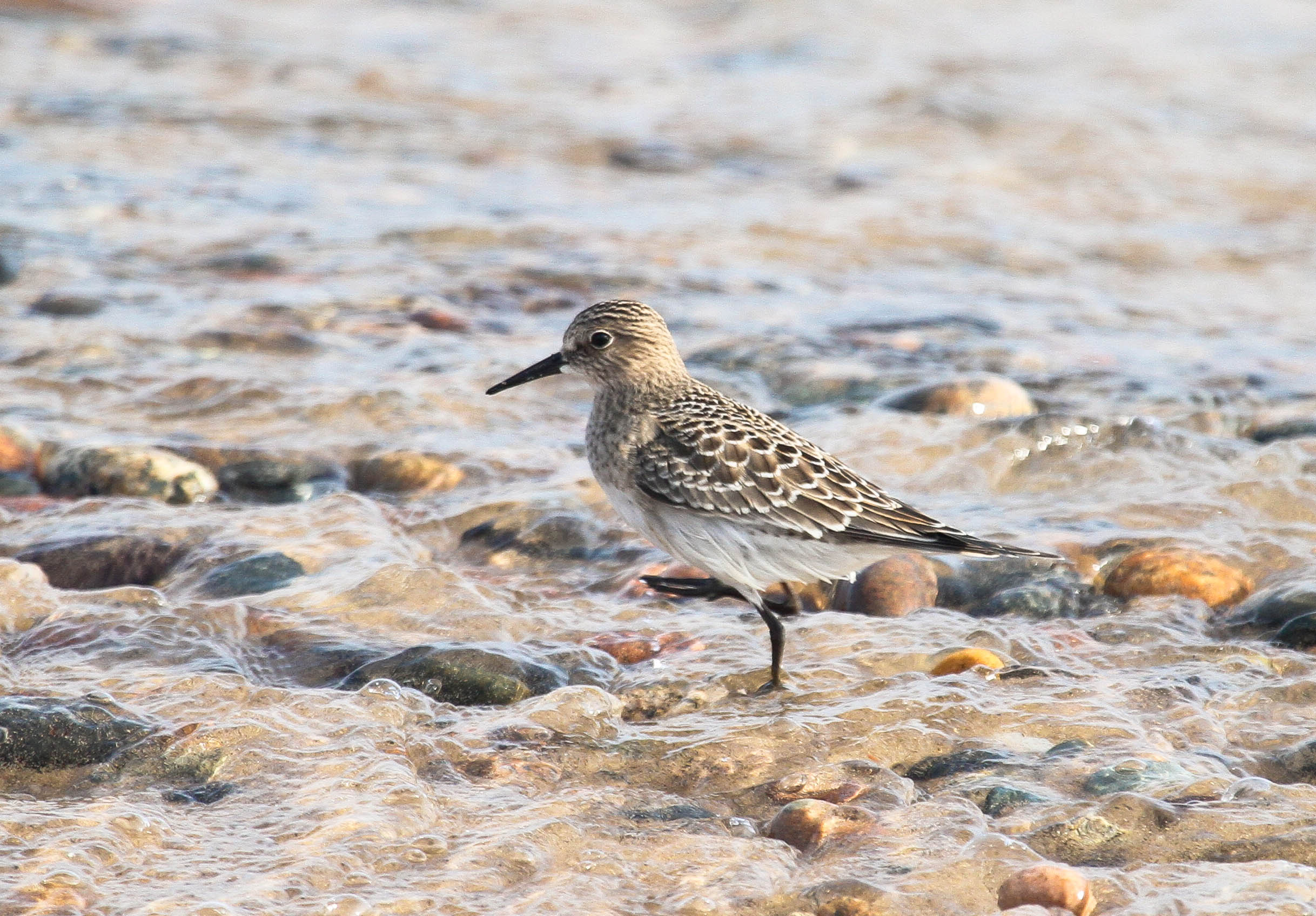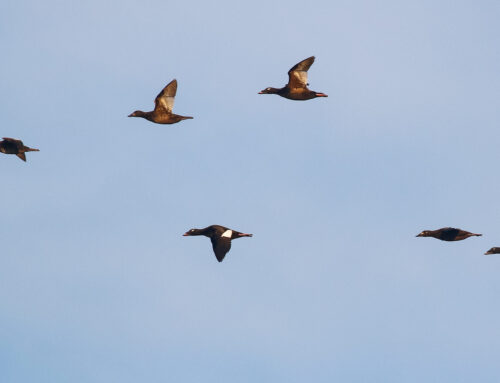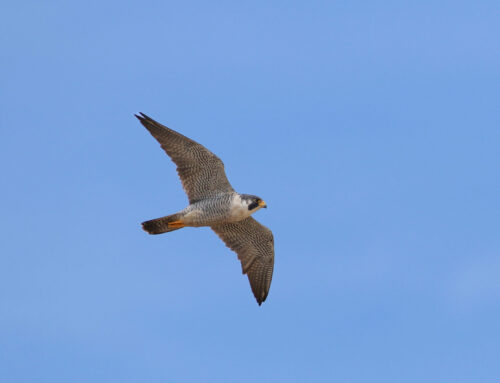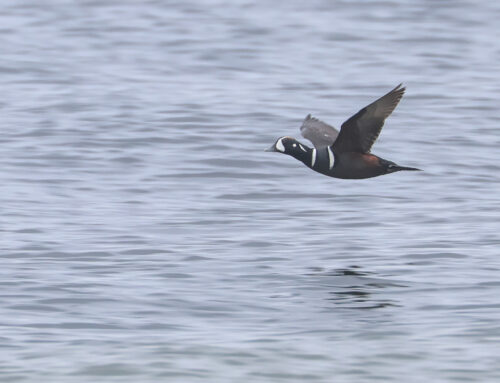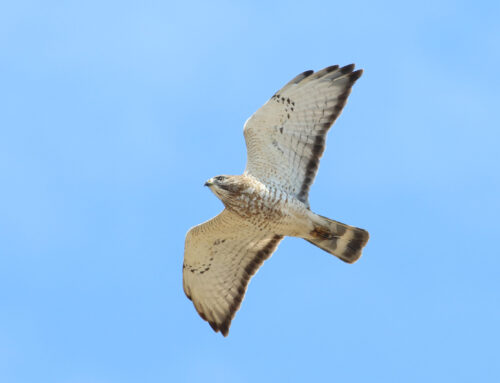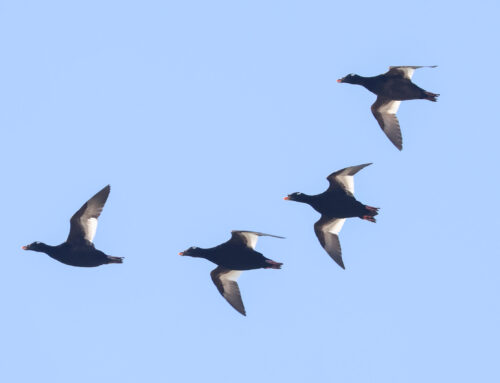For me, the highlight of the past few days has been the shorebirds! I’ve always particularly enjoyed watching them scramble along a beach or a breakwall, even before I began to seriously tackle the notoriously difficult challenge of learning to distinguish one peep from the next. Today I finally caught up with one of my favorites for the first time this year — a Buff-breasted Sandpiper. This brings the diversity for the season to a total of 14 species of shorebirds, including a Marbled Godwit which flew over in the company of a Whimbrel on Tuesday morning!
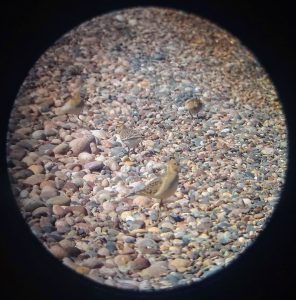
Unfortunately this Buff-breasted Sandpiper was a little too quick for me to get a better shot than this digiscope attempt. Here it can be seen in the foreground, with a trio of Baird’s Sandpipers behind.
Baird’s Sandpipers have been the most common shorebird on the beach the past couple days, hitting a peak of 12 yesterday and a season total of 32. Overall for the season Semipalmated Sandpiper has been m
ost numerous, with 94, Sanderling second at 82, followed by Semipalmated Plover at 35.
Red-necked Grebes haven’t put on another show quite like the day last week when 2,954 flew by, but they continue to power through. Their season total has just cracked 5,000, which is undeniably a lot of grebes, but st
ill a long way to go to reach the average since 1989 of 12,572.
Ducks are yet to get going in big numbers, but a few have come through every day. Yesterday a trio of White-winged Scoters migrated past just offshore with a flock of Red-necked Grebes. Today one more White-winge
d was spotted, bringing the season tally to six. Common Merganser, with a total of 33, is the only other diving duck to date. Dabbler diversity has been higher, with at least a handful of individuals from all the expected species being seen. Blue-winged Teal has the highest total, at 40, and many more of them ought to migrate past any day now.
Be sure to keep a close eye on Dunkadoo for all of the count data in real-time!
Gary Palmer
WPBO Fall Waterbird Counter

